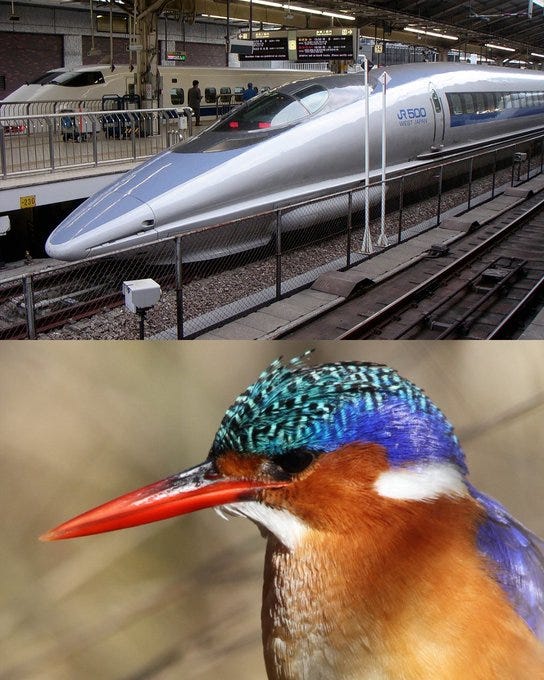The 500 Series Shinkansen high-speed train's design mimics a Kingfisher bird's beak to improve aerodynamics. The shape helps reduce the sonic boom effect when entering tunnels, a significant issue in the early days of high-speed trains.
How it works
- The nose reduces the gradient of pressure waves created when the train enters a tunnel.
- This reduces the micro-pressure waves emitted when the train exits the tunnel.
- The flatter the front of the train, the bigger the pressure change when it exits
The Shinkansen's more aerodynamic nose also allowed it to consume less power while maintaining high speeds. It reduced energy consumption by 15%, increased speed by 10%, lowered noise, and improved passenger comfort.
Eiji Nakatsu, a Railway Technical Research Institute engineer, studied the kingfisher bird and noticed it could dive into water with minimal splash. As aerodynamics and hydraulics are closely linked, this inspired his design.
Some newer models, like the N700S, have dual noses, one on each end, allowing for operation in both directions without turning the train around, thus improving turnaround times.
The length of the nose has increased over time, with the latest models having noses extending up to 15 meters or more, depending on the train model.
The story of the Shinkansen and the kingfisher is a testament to the power of biomimicry in engineering. It demonstrates how simple observations of nature can lead to solutions to some of our most complex technological challenges.
It has become a symbol of Japanese technology and efficiency.




